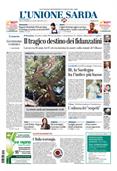The "secret" of the Shroud revealed: it was not draped over a human body, but over a sculpture
A new 3D simulation confirms the hypothesis of a medieval artefactPer restare aggiornato entra nel nostro canale Whatsapp
The Shroud of Turin, a linen sheet bearing the image of a man, is the result of a cloth stretched not over a human body, but over a bas-relief sculpture.
This is indicated by the 3D simulation published in the journal Archaeometry , which therefore confirms the hypothesis of a medieval artefact that has been put forward for some time , starting from the study published in 1989 which dated the Shroud to a period between 1260 and 1390 AD.
The analysis was conducted by the Brazilian expert Cicero Moraes , known for his three-dimensional reconstructions of the faces of many historical figures, from Anthony of Padua to Francesco Petrarca.
One of his most recent works, published in June 2024, reconstructed the face of Irhoud, the oldest Homo sapiens discovered so far, who lived 315,000 years ago.
"The image on the Shroud of Turin is more consistent with a bas-relief matrix," Moraes told Live Science. "Such a matrix could have been made of wood, stone, or metal," the expert added, "and pigmented, or even heated, only in the contact areas, producing the observed imprint."
Using 3D simulation tools, Moraes compared two different scenarios: in the first, a virtual sheet was draped over a reconstructed human body, while in the second, it was draped over a bas-relief sculpture.
The results show that the second scenario matches the photographs of the Shroud almost exactly, while the cloth placed on the human body produced a much more distorted image.
Italian expert Andrea Nicolotti, professor of History of Christianity at the University of Turin, also agrees with Moraes's conclusions, but he emphasized on the website Skeptic.com that the study doesn't actually say anything new.
"Cicero Moraes is right, but his research isn't particularly revolutionary," Nicolotti states. "For at least four centuries," he notes, "we've known that the body image on the Shroud certainly couldn't have been created through contact with a three-dimensional body."
(Unioneonline)
